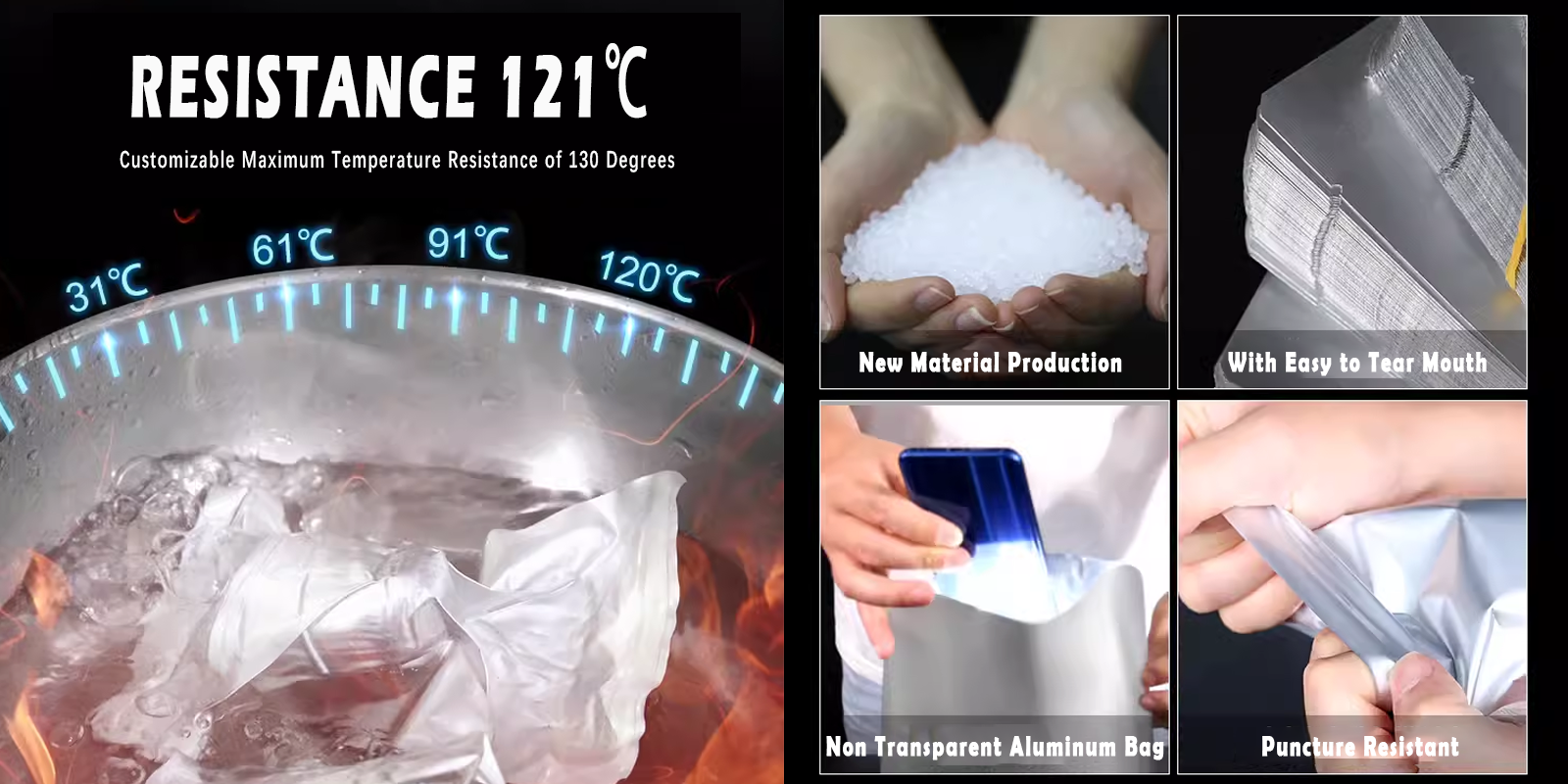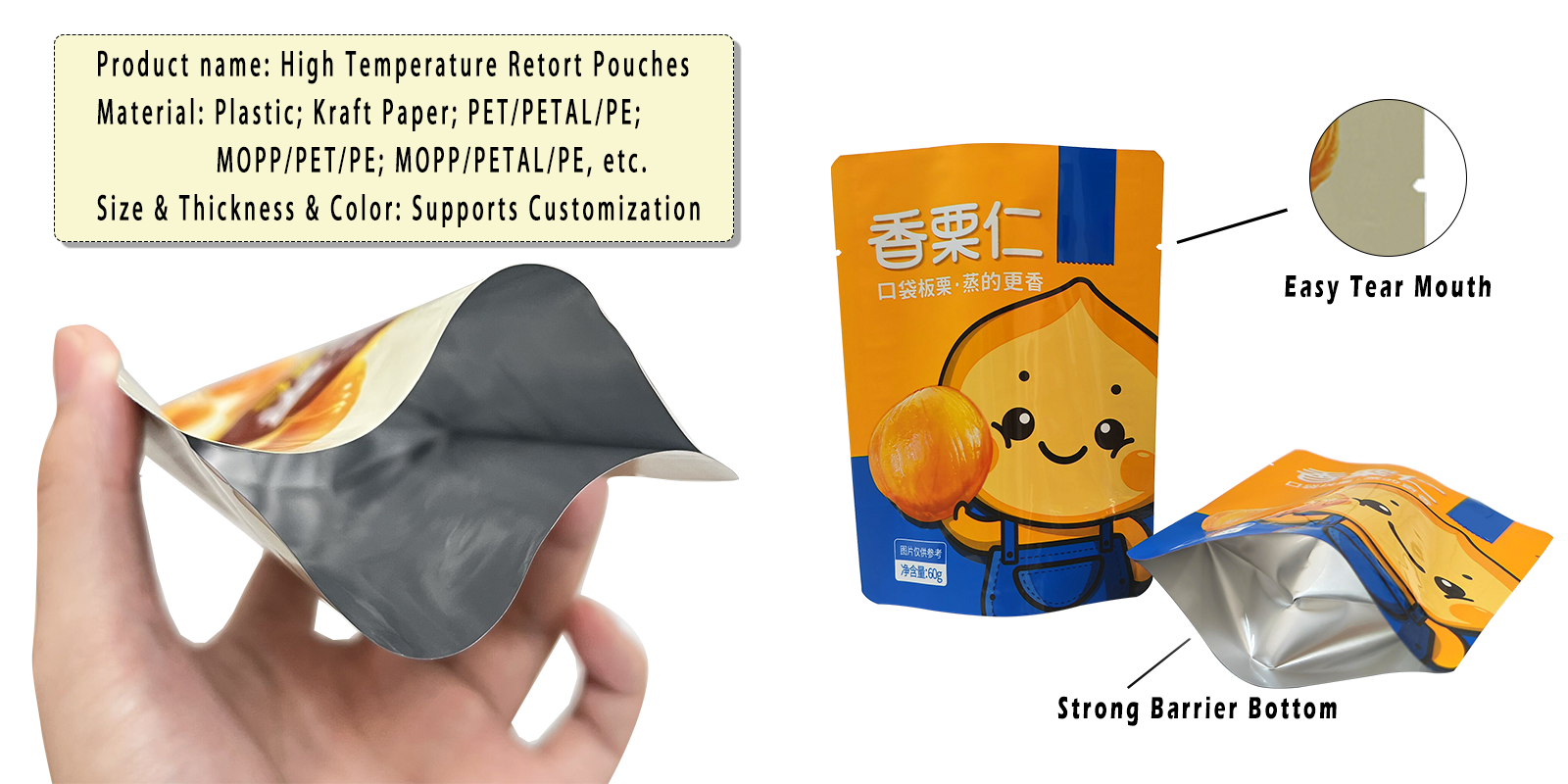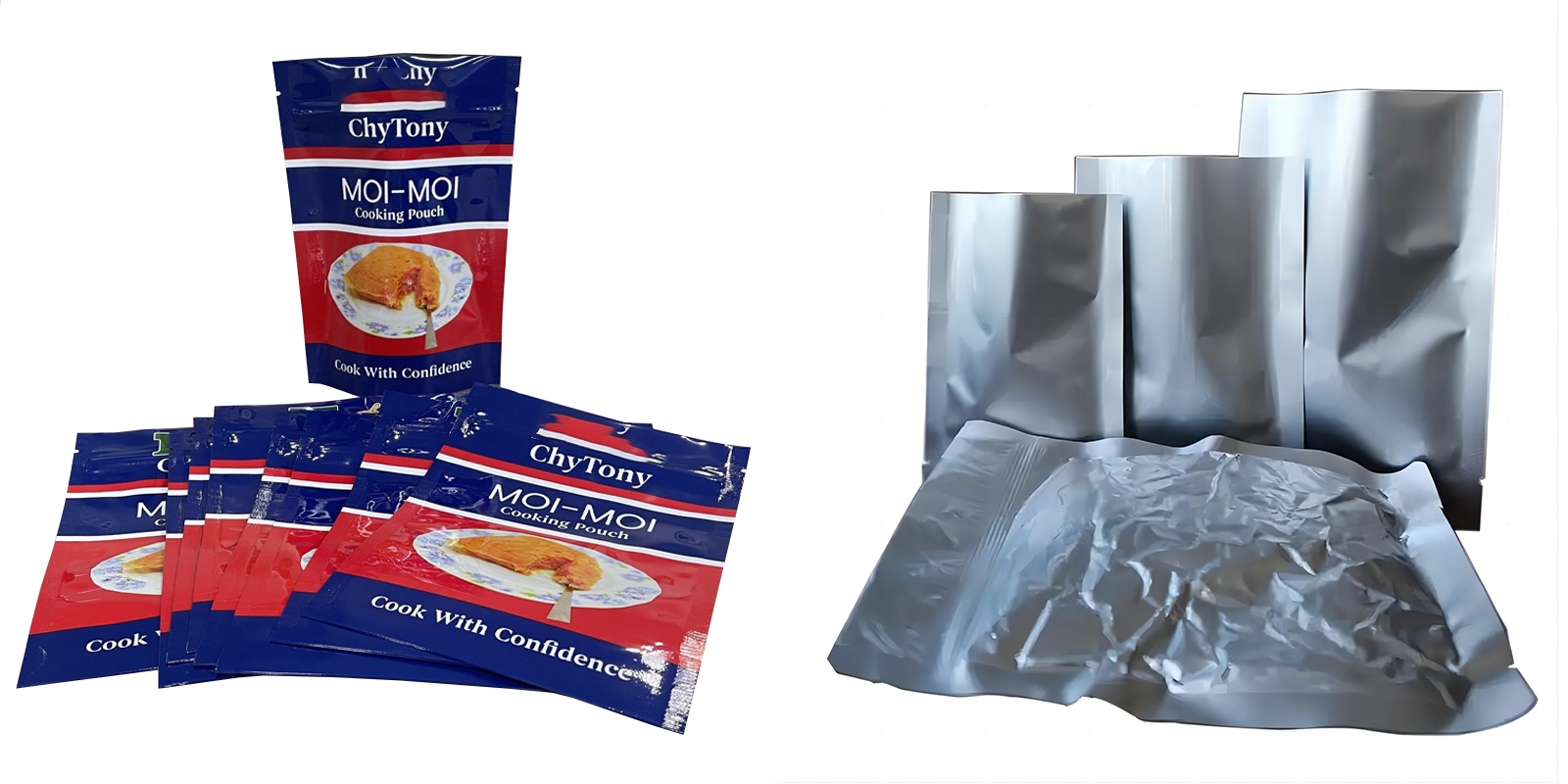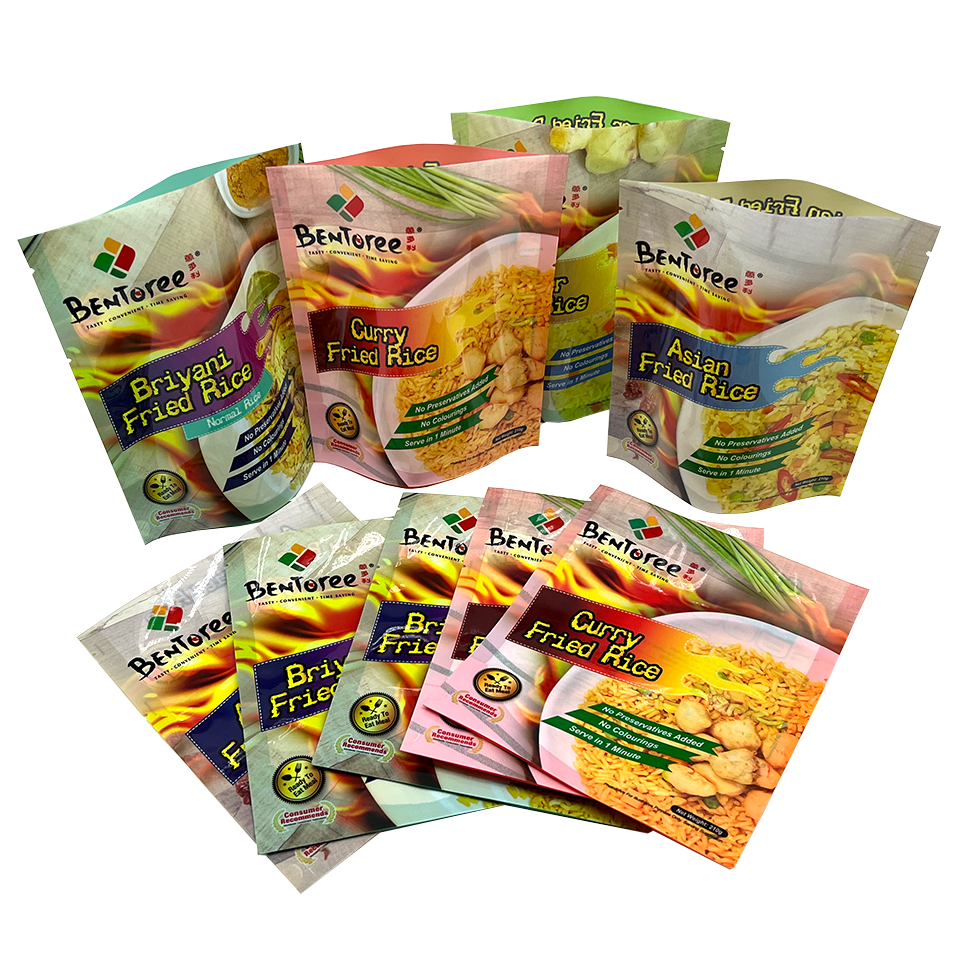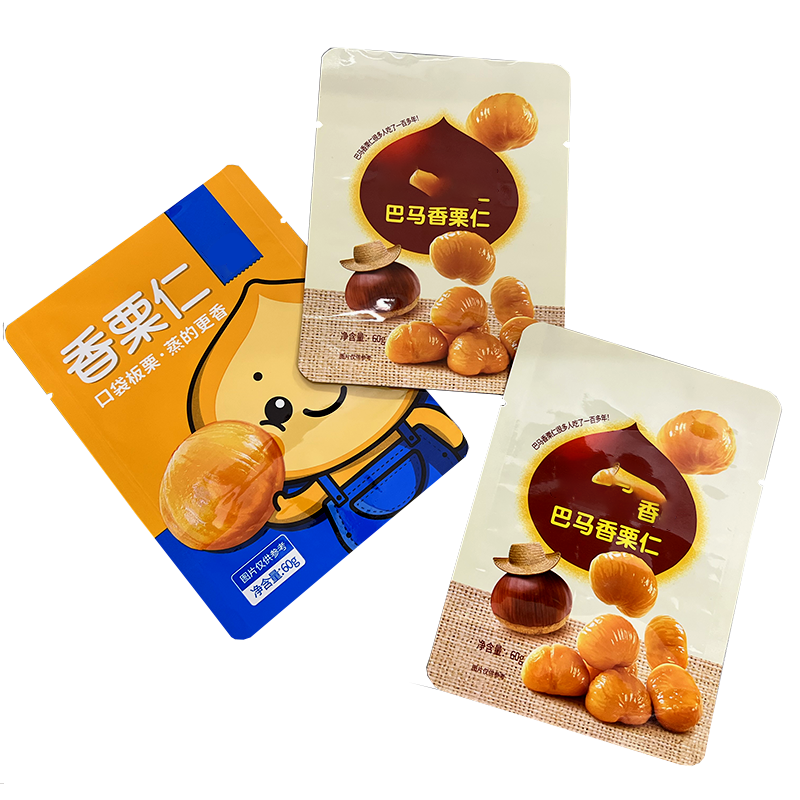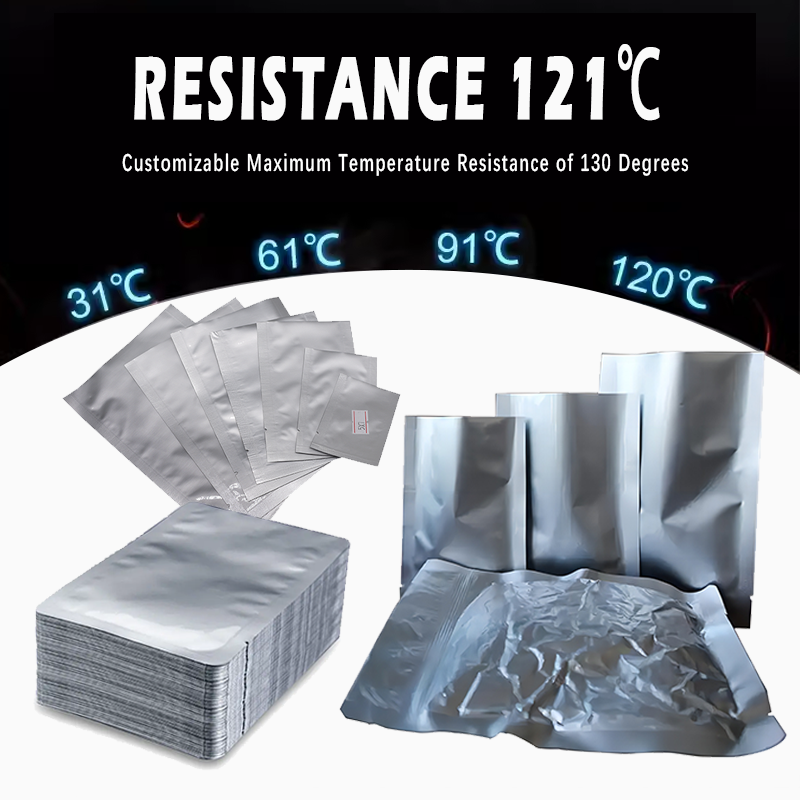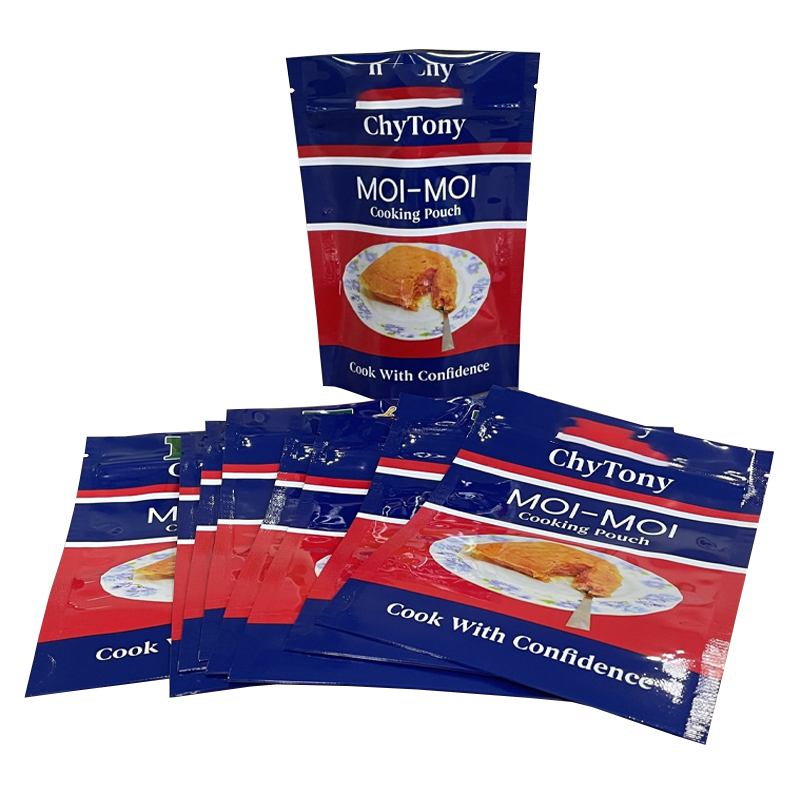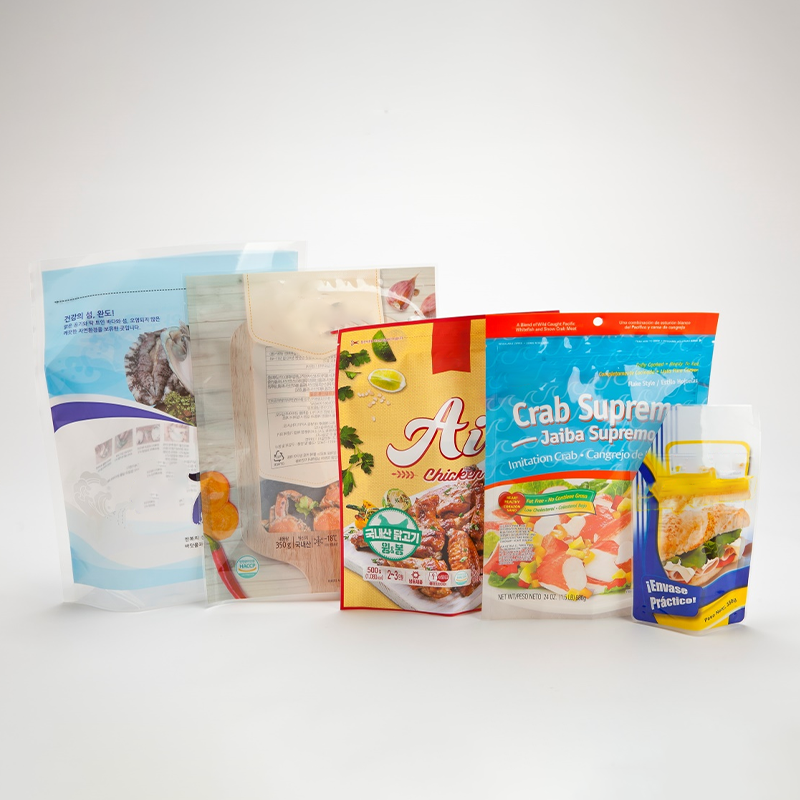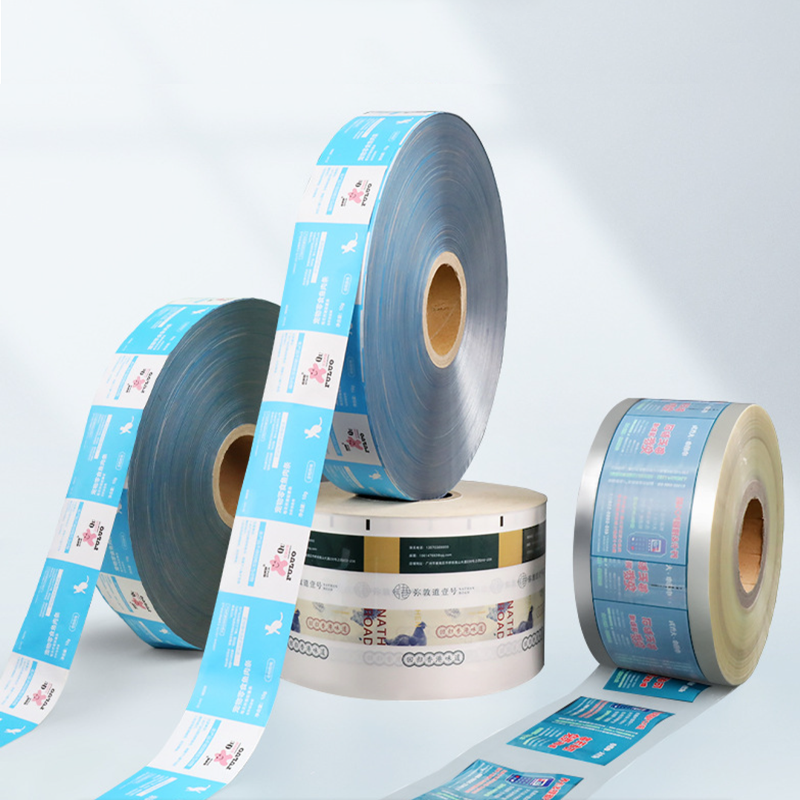Comparison with Traditional Methods: Retort Pouch vs Can
The packaging process of retort pouches is often likened to canning, yet with a critical difference: the flexibility of the package itself.
Both retort pouches and canning are common techniques of food preservation, but each has its own set of pros and downsides.
Retort Pouch:
Strengths:
·Lightweight: Retort pouches are lighter than cans, making them cheaper to ship.
·Quick Heating: Due to their thin profile, retort pouches heat up faster, ensuring quicker cooking times.
·Space-Efficient: Their flexible nature allows for more efficient storage, taking up less space than rigid cans.
·Visual Appeal: With the ability to print high-quality graphics, retort pouches can be more visually appealing to consumers.
Weaknesses:
·Durability: While they are robust, retort pouches can be more susceptible to punctures than cans.
Canning & Botting:
Strengths:
·Long Shelf Life: Cans and bottles offer an extended shelf life for products.
·Durability: They are less prone to damage during transportation.
·Consumer Trust: Many consumers trust the traditional canning method and perceive it as safe.
Weaknesses:
·Weight: Cans and bottles are heavier, leading to increased transportation costs.
·Storage: They take up more storage space due to their rigid structure.
·Environmental Concerns: If not recycled, cans and bottles can contribute to environmental pollution.
Final choice between retort pouches and canning relies on product demands and audience preferences.
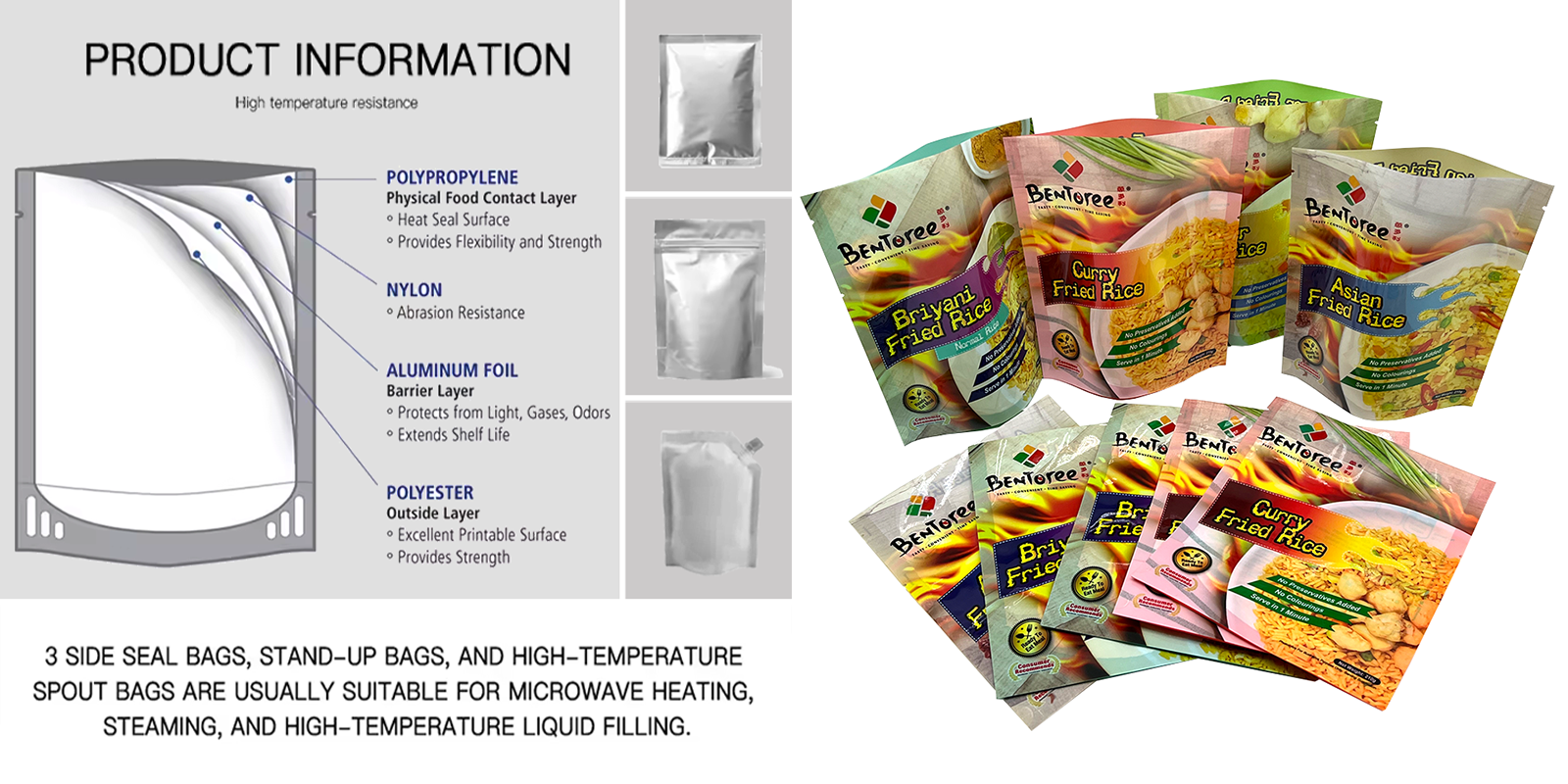
Essential Functions & Key Attributes of a Retort Bag
A retort bag is not just a container but a multi-functional tool in the food packaging arsenal.
Whatever type of retort pouch is used for food packaging, it needs to satisfy customer preferences, meet strict safety requirements, and provide useful advantages.
1.Sterilization Compatibility
Retort bags must withstand high temperatures and pressures during the sterilization process. This is vital for ensuring the safety and longevity of the food product.
2.Barrier Properties
Oxygen Barrier: To prevent oxidation and preserve flavor, retort bags need a high oxygen barrier.
Moisture Barrier: A strong moisture barrier is essential to maintain product texture and prevent spoilage.
Light Protection: Some food products are sensitive to light, so the bag should offer adequate protection to preserve color and prevent nutrient loss.
3.Durability and Puncture Resistance
These bags must resist punctures and tears during transportation and handling. Durability ensures the integrity of the food product until it reaches the consumer.
4.Chemical Resistance
The material should not react with food products or degrade over time, ensuring the safety and quality of the food.
5.Seal Integrity
A robust seal is crucial to prevent leaks and contamination, ensuring that the sterilization process remains effective throughout the product's shelf life.
Overall, a retort bag is a versatile food packaging method. It must meet strict safety requirements, provide practical advantages, appeal to customer tastes, and be affordable and ecologically friendly.
